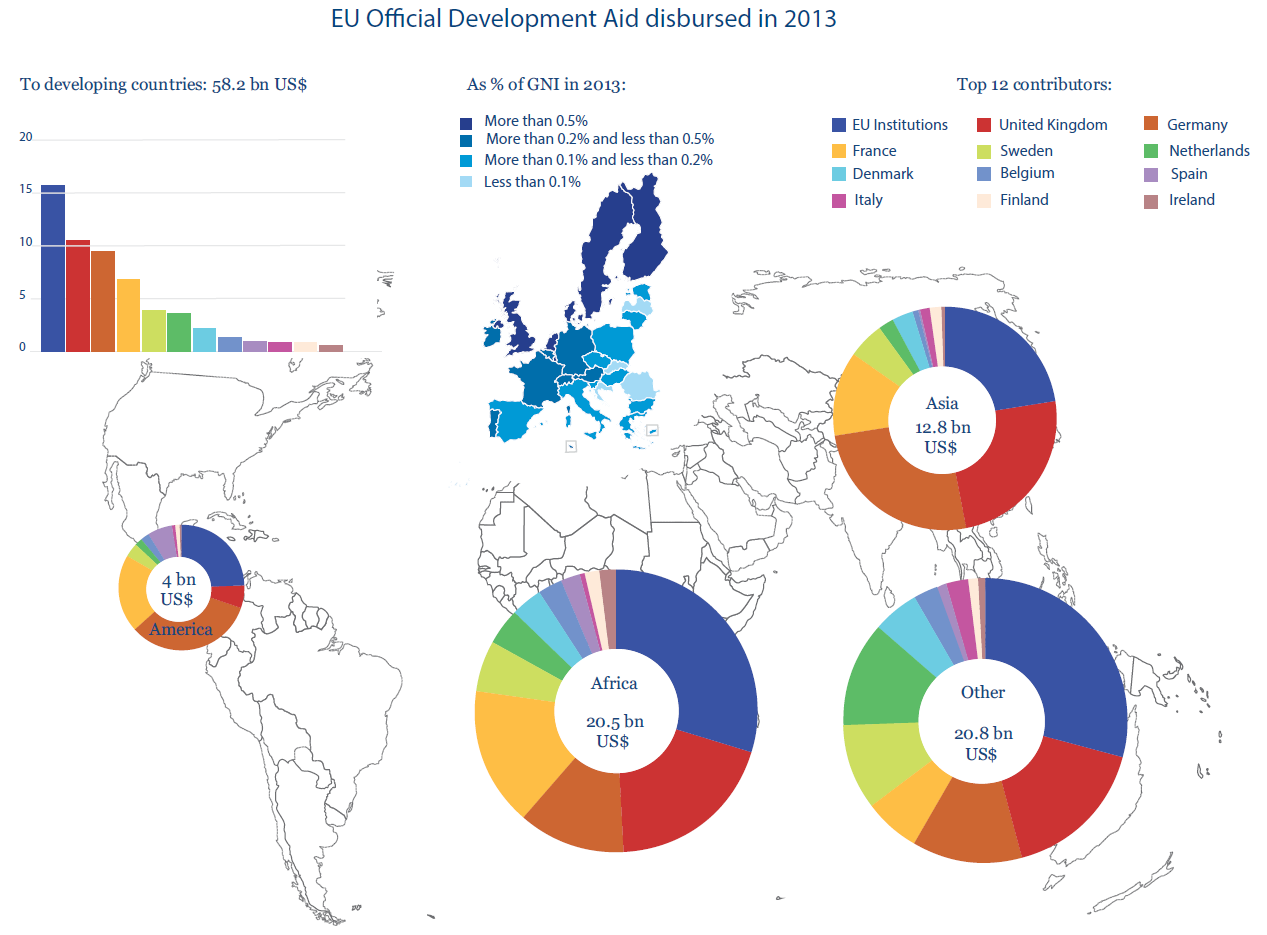Written by Manuel Manrique Gil (Directorate-General for External Policies).
Graphics and statistics by Eulalia Claros (European Parliamentary Research Service)
The world has changed rapidly in recent years: the rapid growth of emergent economies and the slow recovery of the European Union after the 2008-2009 economic crisis have diluted the ‘North/South’, ‘developed/developing’ divisions that sustained the traditional development model. Amidst profound changes, the international community will agree this year on a new set of goals to follow up on the work of the Millennium Development Goals (MDGs) and implement environmental commitments agreed at the 2012 Rio+20 summit. The future targets – ‘Sustainable Development Goals’ (SDGs) – will promote sustainable development and aim to eradicate poverty by 2030. To do so, they must take into account the multipolar character of the world, the changing geography of poverty, the impact of global challenges (climate change and new security threats such as health epidemics and non-state armed groups) and transformations in development financing. The European Parliament (EP) is closely following these changes – through its legislative and scrutiny powers, own initiative reports and interparliamentary meetings with third countries – and shaping the EU’s policies and positions in global debates.
Developing nations, the engines of global economic growth for the past ten years, now represent half of the world’s gross domestic product (GDP). Numerous countries are moving from the ‘low’ to ‘middle income country’ category (with per capita gross national income [GNI] of more than USD 1 045) and have more resources at their disposal. Nonetheless, these countries still face challenges: it is estimated that 73 % of the world’s poorest people live in middle income countries. The traditional development cooperation model, based on rich countries transferring aid to poor countries, is no longer dominant. Development financing is now also widely considered to be more than aid: it includes domestic resources and international private flows. Migrant remittances (USD 404 billion) and foreign direct investment (USD 778 billion) are now substantially larger than aid flows (USD 135 billion).
Aid has not lost its relevance, however. Official public aid retains the exclusive objective of promoting development and can be directed to where it is most needed: while it constituted only 4 % of overall development financing in middle-income countries between 2002 and 2011), aid represented 54 % for the poorest countries. Better development financing, as the EP has noted, also requires fighting tax evasion and illicit financial flows, which cost developing countries EUR 660-870 billion each year.

Shaping a new development policy – also inside the EU
The EU responded to these changes in 2012 with a new development policy called the ‘Agenda for Change’. The Union’s aid now focuses on the poorest countries and fragile states (often affected by conflict), where extreme poverty is widespread and aid can have the greatest impact. New development partnerships – less focussed on aid – will be established with middle income countries. The EU defined two pillars for its development policy: ‘inclusive and sustainable growth’ and ‘human rights, democracy, rule of law and good governance’. For its part, the EP has welcome the emphasis on human rights and the effort to target aid where it is needed most, but has also warned against looking only at partner countries’ GNI without considering levels of human development, existing inequalities and vulnerabilities – such as those of small developing islands, landlocked countries and fragile states.
The EU remains the world’s leading contributor of development aid. Official Development Aid (ODA) disbursements by EU institutions and Member States in 2013 reached USD 58.2 billion in 2013. Aid commitments from the 28 EU Member States on the same year amounted to USD 71 billion – more than half of the world’s total. This represents 0.41 % of the Union’s GNI, far from EU countries’ 0.7 % commitment. (Only Sweden, Luxembourg, Denmark and the United Kingdom met the goal.) The EP has reiterated the importance of providing sufficient aid and of Member States’ commitment to reach 0.7 %.
Despite economic difficulties, a majority (52 %) of EU citizens consulted in a recent Eurobarometer survey believe that aid should be increased to promised levels – and some 15 % even believe it should extend beyond that. Most EU citizens consider that tackling poverty in developing countries contributes to a more peaceful and equitable world (74%) but it is also in the EU’s interest (78%). Europeans understand the growing interdependence in our world, between countries and also between policies.
Because aid will not alone create development, the EP has regularly called for concrete measures to make the EU’s internal policies on migration, trade, finance, agriculture and the environment compatible with global development objectives. Only by adopting ambitious and coherent policies – inside and outside its borders – will the EU effectively contribute to ending poverty and attaining global sustainable development.








me parece que la mayor parte de los eurodiputados cobran mucho mas de lo que se merecen
[…] follow and help to shape these changes, while also taking the EYD as an opportunity to reflect upon Europe’s role in the world and finding ways to make EU internal policies more coherent with development objectives. […]